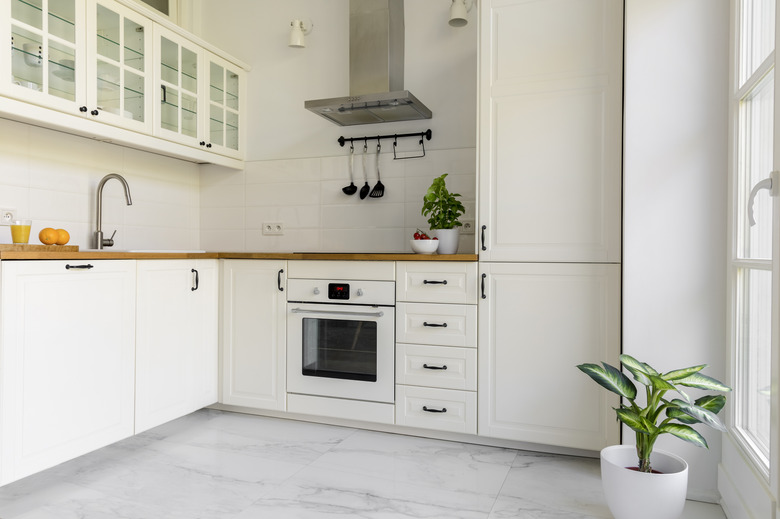What To Do If A Laminate Floor Gets Wet
Laminate flooring is beautiful and designed to be long lasting, but it doesn't like water. If you've ever seen pictures of laminate flooring water damage, you know what moisture can do to your floor. A little bit of spilled water on a laminate floor isn't likely to cause any damage as long as it's cleaned up quickly. A larger spill, however, or one that is left long enough to seep between the seams can turn into a big problem.
The Layers of Laminate Flooring
The Layers of Laminate Flooring
According to Flooring America, laminate flooring has four layers: a cushioned bottom layer; a fiberboard core that is similar to particleboard; a design layer above the core that gives your floor its color and pattern; and a top coating of aluminum oxide, known as the wear layer, which provides protection from moisture, fading, stains, and burns. The wear layer protects against spills on the surface of the flooring, but moisture that seeps into the joints along the boards' edges can reach the unprotected core material, which is highly prone to moisture damage. That's why it's important to wipe up spills promptly.
Spilled Water on Laminate Floor
Spilled Water on Laminate Floor
A laminate floor will not be damaged as long as it is not saturated with water. If you have a spill, it is best to promptly pat it dry with a sponge or a towel. It's when you have a large spill or a flood that the laminate flooring becomes saturated with water and damage occurs. Laminate flooring water damage pictures will show that damaged floors can swell, bend, buckle and crack.
How Damage Occurs
How Damage Occurs
If you've ever had a bookcase or table made of particle board and gotten it wet, you've noticed that the boards swell, bubble, and warp. This is the same thing that can happen to your floorboards. If enough water gets into the seams, the core will soak up the moisture. If your laminate flooring is bubbling at the seams, it has water damage. And along with swelling, bending and cracking, a saturated laminate floorboard can develop mold.
What to Do
What to Do
If your floor shows signs of water damage, there is little to do except replace the affected floorboards. Once the boards are water damaged, they can't be sanded or fixed in any other way. Even when the surface appears dry, the boards can still hold enough water that your laminate floor is bubbling at the seams. The good news is, if the moisture is caught quickly enough the affected planks can sometimes be removed, dried and reinstalled.
If the planks get so wet that they swell up, they will need to be replaced. Because of their interlocking design, laminate floorboards can be removed by pulling them up, starting at the room's edge. Laminate flooring comes in packs, and there are usually planks left over from the installation that can be used to replace the damaged boards. If not, you'll have to try to find a package of the same brand and style of flooring, or at least a close match.
